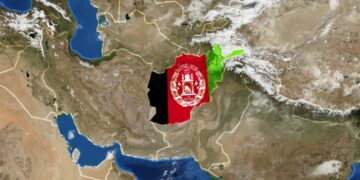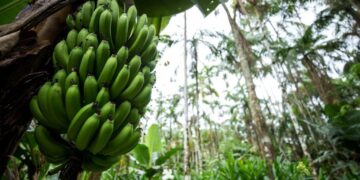Asunbiaro S. C.;1 , Ogundoju B. M.;2 & Lawal M.O.3
1Adeyemi Federal University of Education, Ondo State, Nigeria
*Corresponding Author Email: asufarms@gmail.com …
Highlights
Abstract
Developmental progress remains a significant challenge across Africa, primarily due to the high costs associated with technology investments. For African nations like Nigeria, South Africa, and Ghana to keep pace with the developmental strides of countries such as China, India, Singapore, Malaysia, and Brazil, a strategic approach is necessary. Open Source Software (OSS) offers a viable solution, providing a cost-effective means to address the continent’s socioeconomic challenges. The adoption of OSS can lead to substantial savings of importation costs in infrastructure and technology importation development, enabling African enterprises to compete on a global scale. Furthermore, embracing OSS can foster job creation and promote collaboration among academic institutions, government bodies, and the industry. This collaborative effort can empower citizens to develop local software solutions tailored to meet community needs, ultimately enhancing Africa’s development trajectory.
Keywords:
1. Introduction
For African nations to fully unlock their potential, advancement in Information and Communication Technology (ICT) sector is crucial. The quality of life and standard of living for the majority in many African countries remain below acceptable levels, contributing to a slow rate of development. Governments across the continent have struggled to address these pervasive challenges effectively. However, the proliferation of recent technologies, particularly in ICT, offers a unifying platform for individual at all societal levels to engage in discussion of pertinent issues. Through the internet, mobile communication, and social media, people can engage in discussions about critical issues affecting their lives, including politics, security, economy, social matters, and religion. To keep pace with the global developmental rate, African nations must identify and exploit strategic advantages. Open Source Software (OSS) presents such an opportunity, offering a cost-effective solution to surmount the socioeconomic challenges that have hindered the continent’s progress.
2.Open Source Software
According to the Open Source Initiative (OSI), “Open source software is software that can be freely used, changed, and shared by anyone. Open source software is made by many people, and distributed under licenses that comply with the Open Source Definition.” OSI, a global non-profit organization, champions the open source movement. Tyler (2005) defines open source software as a type of software whose programming source code is accessible to the public for enhancement or error correction. Programmers opting for open source release their work under an open source license, ensuring the software remains freely available. This has garnered support from thousands, including government agencies, non-profits, academia, and the private sector. The National Advisory Committee on Innovation in South Africa (NACI, 2002) highlighted the utility of open software for developing countries, enabling them to rapidly join the information age. It promotes innovative development models, leveraging global collaboration over the Internet, and fosters the creation of new markets and business opportunities.
2.1 Open Source Software and Legal Dispute
In 2008, the US Federal Appeal Court ruled in favor of Open Source Software/Free Software, as declared by Judge Jeffrey White in his 15-page decision. He stated, “Copyright holders who engage in open source licensing have the right to control the modification and distribution of copyrighted materials.” Furthermore, he acknowledged the significant impact of open source licensing, noting, “Open source licensing has become a widely used method of creative collaboration that serves to advance the arts and sciences in a manner and at a pace few could have imagined just a few decades ago,” according to Shiels (2008).
2.2 Why Open Source Software?
According to software engineers and researchers focused on open source, some advantages of Open Source Software (OSS) include:
- OSS helps businesses achieve rapid market penetration, establish industry standards, and gain a competitive edge.
- Companies can stay updated with technological advancements by producing cost-effective, reliable, and high-quality software through OSS.
- The involvement of numerous independent programmers in testing and debugging enhances the reliability of OSS beyond that of proprietary software.
- OSS fosters creativity and innovation among its wide network of programmers.
- Software maintenance is streamlined with the help of numerous programmers worldwide, addressing errors, bugs, security issues, and more efficiently.
- Unlike proprietary software, OSS faces no immediate pressure to generate profit, allowing for a more development-focused approach.
- OSS ensures product interoperability, making its applications usable across various platforms.
2.3 OSS and Social Media Platforms
Facebook, as a leading social media platform, operates on the foundational principles of Open Source Software (OSS). It serves as a daily communication hub for millions of users globally. Facebook’s commitment to OSS is rooted in its inception, utilizing foundational technologies like PHP, MySQL, and memcached. The platform openly acknowledges the invaluable contributions of the open-source community to its development and infrastructure. Facebook has consistently reciprocated by sharing its advancements and learnings with the broader community, thereby aiding other entities—ranging from startups to established corporations—in leveraging their insights for scalable web, mobile, data, and infrastructure solutions. Beyond Facebook, numerous social media networks such as Twitter and Instagram also rely on open-source technologies. These platforms often originate from academic research initiatives, emerging as personal projects by students or faculty, or as tools designed to facilitate scientific inquiry. This symbiosis with OSS not only accelerates innovation but also fosters a collaborative environment that propels the technological and social capabilities of these platforms.
3. Africa’s Foreign Exchange And Proprietary Software
Many African nations are grappling with the daunting challenge of managing the foreign exchange rates of their local currencies against the US Dollar, especially in light of the recent global financial turmoil. This issue is exacerbated for these countries due to their reliance on the importation of proprietary software, combined with weakening local currencies, which significantly increases the cost of acquiring such software. This not only deepens the financial crisis but also entrenches poverty across the continent.
South Africa, a prominent ICT consumer in Africa, illustrates this predicament well. Prior to embracing Open Source Software (OSS) in 2003, the government accounted for a substantial 70% of all ICT expenditures across various sectors, with the annual cost of proprietary software licenses alone reaching R3.7 billion (approximately $580 million). When including support and upgrades, this figure soared beyond $1.5 billion. The depreciation of the Rand further inflated the cost of importing foreign technology. A study by the Government Information Technology Officers Council (GITOC) highlighted the unsustainable cost of operating approximately 300,000 government computers with proprietary software, pointing out the country’s dependency on foreign companies and its vulnerability to currency fluctuations.
In a significant turn of events in 2003, the South African government realized a savings of approximately R10 million ($1.5 million) through initial implementations of OSS. This shift towards open-source models is further supported by a report from the Standish Group (2008), which estimates that the adoption of open-source software has yielded annual savings of around $60 billion for consumers worldwide. These savings underscore the potential of OSS to mitigate some of the financial challenges faced by African countries, offering a sustainable path towards technological independence and economic stability.
3.1 Africa and Information Technology (IT)
The categorization of many African countries as least developed by the United Nations underscores a persistent struggle with ineffective development strategies. Despite a pervasive belief in an inescapable cycle of poverty and economic dependency, Africa harbors vast untapped potential. Kehbuma (2005) pinpoints poverty, particularly in rural areas, as a significant factor behind South Africa’s high rates of crime, including rape, murder, drug addiction, and the spread of infectious diseases such as HIV/AIDS and TB. The advent of globalization has compelled African leadership to confront these issues head-on, recognizing technology as a pivotal solution to pressing economic challenges.
In response to the compounded challenges of poverty, inadequate mobile and electrical infrastructures, low educational levels, and limited computer literacy, the South African government adopted a central approach to make ICTs and other informational services accessible to impoverished rural communities, as noted by Snyman et al. (2003). This strategic pivot towards embracing technology was motivated by the urgency to bridge the developmental gap with the rest of the world, particularly in leveraging social media to foster societal advancement. Under President Mbeki’s leadership, the government’s decision to integrate technology was driven by the anticipation of transformative changes in the lives of its citizens, offering a beacon of hope for sustainable development and social upliftment in the face of globalization’s relentless pace.
3.2 Exporting ICT
India has made a name for itself in exporting business and software services, but it’s not alone. Other emerging nations across Latin America, Asia, the Middle East, and Sub-Saharan Africa have also carved out successful niches in the global market for various services. Notably, Brazil, Costa Rica, Chile, Mexico, and Uruguay have become key players in exporting information technology and distribution services within Latin America. Similarly, countries like Kenya and South Africa have made their mark by exporting professional services to Europe, highlighting the global demand for specialized expertise from these regions.
The period between 2000 and 2010 saw a remarkable surge in information technology exports from nearly all developing nations, with Sub-Saharan Africa being the only exception, as reported by Goswami et al. (2012). This trend underscores the growing importance of technology and innovation in driving economic growth across the developing world.
In a significant pledge made in 2006 at the Microsoft Government Leaders Forum Africa, Bill Gates announced an initiative aimed at aiding 45 million Africans by 2010. This commitment by one of the world’s leading tech figures highlighted the potential for technology to make a substantial impact on Africa’s development. Donor agencies have been urged to recognize and invest in this potential to foster growth and improvement in the lives of African people.
Moreover, the Internet revolution, coupled with advancements in hardware and software technology, has enabled South Africa to launch the “Cape information technology initiative” (CITI). This project, if successfully implemented and adopted by other African nations, could significantly attract both domestic and international investors, enhancing the continent’s appeal as a hub for technological innovation and development. However, as of 2024, details regarding the fulfillment of Gates’ promise or its direct effects on Africa remain unclear, leaving room for speculation on the actual impact of these initiatives on the continent’s technological and economic landscape.
3.3 African Governments and Policy Implementation
There is a pressing need for African governments to formulate policies on Open Source Software, along with engaging actively in these initiatives, if the continent is to make significant strides in global technological advancement. These policies should transcend mere paperwork and require proactive involvement from governments. They must fervently support their domestic software development sectors and insist that multinational corporations within their borders do the same. Erran (2003) posits that governments can spur software sector growth by providing capital, including venture capital, thereby enhancing the industry’s dynamism, human capital (via investment in education), quality of life, wage levels, and by effectively advocating for the sector.
Although many African countries (notably Nigeria, Egypt, Ghana, etc.) have developed policies that are qualitatively comparable to those of developed nations, the challenge lies in their poor implementation and the lack of continuity. This is often due to governmental changes, a lack of political will to execute such policies, or the prevailing political interests. A stark illustration of this issue is the Nigerian Geoinformation Policy (NASRDA, 2003), which recognized the importance of adopting policies to enhance public awareness and access to standardized and coordinated geospatial data across various institutional sectors and levels of government (local, state, and federal), as well as in partnerships with the private sector. Since the policy’s submission in 2003, no substantial progress has been noted. In contrast, the Norwegian government introduced a similar policy (Norway Digital) in the same year, and today, Norway is regarded as a paragon of National Spatial Data Infrastructure (www.geonorge.no). Similarly, South Africa openly debated the merits of proprietary versus Open Source Software in 2001, leading to a thriving ecosystem supported by emerging Small Scale companies following the country’s adoption of OSS.
4. Collaboration Between Academic Institutions and the Industry
Educational institutions in Africa have consistently been ranked very low over the years, largely because the commendable research undertaken by academic institutions often results in mere paperwork, never reaching beyond the confines of these institutions. This situation stems from the absence of government policies or the inadequate monitoring of existing policies aimed at fostering collaboration between the African industry and academic institutions. One solution to this persistent issue is the adoption of Open Source Software (OSS). The collaboration between academic institutions and industries could address the longstanding issue of poor rankings. Indigenous software applications developed through OSS by academic institutions could be successfully launched if supported and ultimately adopted by the industry. Such software, if viable, could be exported to other African countries at a significantly reduced cost. Beyond institution-industry collaboration, researcher-researcher collaboration is also valuable. This involves enhancing academic research through software development, wherein OSS plays a crucial role. An example is Ogunsiji’s (2014) presentation, which suggested that Nigerian students would perform better academically if taught in indigenous languages. With this information, another researcher could develop a software application through OSS to realize Ogusiji’s opinion, boosting other researcher’s morale to pursue significant research not just as an academic duty but as a chosen career path, contributing to the growth of Africa. This approach could help change Africa’s image from a technology dumping ground to a continent of technological innovation. Kamel and Wiegler (2001) confirmed that the term “digital divide” encompasses more than the mere lack of access; the main contributor is the failure to integrate local languages into the Internet. Africa, with its diverse indigenous languages, many of which are neither French nor English, stands to suffer greatly from this divide.
4.1 Mutual Linkages between African Countries
With the abundant human resources in various African countries, the continent could more easily leapfrog into global technological advancement if all countries established a mutual connection in software development through Open Source. This collaboration could be facilitated by organizations such as the African Union (AU), ECOWAS, etc., where significant achievements in any country could be easily transferred to another. This approach is not limited to software development but can extend to all technological achievements. Kehbuma (2005) argues that the cost of connecting to the internet for interaction, online business, and promoting indigenous content would be prohibitive for Africans if the continent remained divided and isolated. The report further suggests that Africa faces a challenging path if its nations continue to operate independently. A potential obstacle to this mutual linkage is the linguistic factor, considered a powerful tool in software development. According to Erran (2003), the success stories of India and the Philippines can be attributed to the influence of the English language, as proficiency in English is seen as a crucial link. Due to colonization, the majority of African countries are either French- or English-speaking. Mutual linkages could thus be established among countries that share the same colonial language. For instance, English-speaking countries like Nigeria, Kenya, South Africa, Liberia, and Ghana could form one linkage, while French-speaking countries like Cameroon, Senegal, Ivory Coast, and Benin Republic could form another. This strategy aims to position these countries as software-exporting nations, at least within Africa. Erran’s (2003) observation that new regional connections have recently diminished the historical dominance of English supports this idea. The Chinese, for instance, have become a preferred location for offshore employment by leveraging their strong linguistic and cultural ties with Japan, while Costa Ricans serve other Spanish-speaking Latin American clients, and Pakistan exports services to the affluent Gulf countries by capitalizing on its cultural connections with them.
4.2 Diaspora Linkages
Open Source Software (OSS) facilitates contributions from programmers regardless of their geographical location, distinguishing it as an advantage over proprietary software. Many Africans have migrated from the continent in search of better opportunities due to factors such as poverty, war, job hunting, security challenges, and education, moving to countries like the USA, UK, France, China, Canada, Russia, and others. Many of these individuals, who arrived in developed countries without formal qualifications, have since advanced academically and become professionals in their fields, rising to prominent positions in numerous companies. When various governments are prepared to adopt OSS, there should be a connection with the diaspora so that local software engineers can leverage the extensive knowledge these expatriates have accumulated over the years. According to Erran (2003), the success of the Indian software industry is partly attributed to the influential and well-positioned Indian diaspora in US high-tech firms. Similarly, high-tech developments in countries like Israel, Taiwan, Korea, China, and Ireland have benefited from their diasporas. What was once considered a “brain drain” has transformed into a “brain gain.”
4.3 Immediate Community Needs
The paper presented by Ogunsiji (2014) highlighted the technological advancement of China, attributing it significantly to the use of indigenous language as the medium of instruction. Most indigenous languages in Africa are uniquely rich in culture, and it is the natives who best understand how a particular word, phrase, or sentence should be translated. Therefore, if indigenous languages are to be adopted as the medium of instruction to aid African countries in technological advancement, Open Source Software (OSS) emerges as the optimal choice for bridging the technological gap. Collaborative efforts to develop software that facilitates the use of indigenous languages in the teaching and learning process, especially for translation, should involve various academic institutions that speak those specific indigenous languages. Furthermore, Africans in the diaspora are likely to be keen on using their extensive knowledge to contribute to the development of such software. An ever-expanding library of freely distributed OSS is available for users who cannot afford proprietary software, catering to a wide range of purposes including professional development, multimedia skills, curriculum support, school administration, and more. As OSS has evolved over the years, several colleges and research institutes have named their projects after their host institutions. Notable examples include BSD Unix, CMU Common Lisp, and the NCSA HTTPd, which evolved into Apache, the world’s most widely used web server.
4.4 Healthy Competition between Foreign and Indigenous Companies
According to M’bayo et al. (1995), a continent governed by leaders indifferent to their populace’s suffering cannot achieve genuine growth. These leaders are often enticed by the lucrative business proposals of multinational corporations, which invest in their countries at the expense of struggling local businesses. Furthermore, it is argued that the investment motives of these foreign entities in Africa stem from greed, prompting questions about the true intent behind neocolonialist calls for substantial and enduring development efforts. Wa Thiong’o (1978) corroborates this view, suggesting that such investments leave Africa mired in poverty and hunger, rather than fostering survival and development. Many of these investing entities are proprietary software companies marketing their products or businesses that utilize proprietary software, leading to elevated production costs. The adoption of Open Source Software (OSS) would engender favourable and robust competition between foreign and local companies, as it would significantly reduce the cost of the end product.
A white paper by Vital Wave Consulting highlights Mark Shuttleworth, one of South Africa’s most accomplished software developers, who advocates for the nation to leverage the affordability and adaptability of OSS to enhance capabilities in science, technology, engineering, mathematics, and entrepreneurship. This is because OSS fosters and facilitates more local software development and support. Additionally, a small OSS services and support company in South Africa, Obsidian, notes, “We simply could not offer our services if we had to ask a proprietary software company’s permission every time we wanted to change the code.” This statement underscores the flexibility and autonomy that OSS provides, enabling smaller companies to innovate and compete more effectively in the global market.
4.4 Human and Financial Capitals
A thriving software industry is fundamentally reliant on both human and financial capital for innovation and sustainability. Governments in each country must make significant investments in quality education at all levels, from primary through to tertiary, and ensure it is affordable for their citizens. Erran (2003) points out that software-exporting countries like Israel, Ireland, and India have all benefited from a national focus on advanced technical education that spans at least one or two generations. These governments regard quality, affordable education as a key policy strategy, aiming to engage citizens in transforming their country into a software-exporting nation. Without a younger generation that is well-educated and strategically positioned in this “information age,” Africa will continue to lag behind in development compared to other regions of the world. Human capital is the most crucial asset that can drive a nation’s economic growth. Liu (2002) notes that China produces around 50,000 new computer science graduates each year, while Einhorn (2002) reports that 465,000 graduates in all fields of science and engineering (some of whom will enter the software industry) graduate annually. Governments should reinvest the proceeds from the adoption of open-source software into the development of infrastructure, as this will attract investors, especially those from outside Africa. Yee (2000) highlights how Intel decided to build a semiconductor factory in Costa Rica following the government’s offer of numerous incentives, including increased air traffic licenses, the construction of power substations, tax exemptions, and reduced energy costs. These measures not only foster a conducive environment for technological innovation but also position a country as an attractive destination for foreign investment in the technology sector.
4.5 Software Development and Electricity Issues
Many countries in Africa, notably Nigeria, grapple with significant challenges in electricity generation and distribution. This issue has prompted numerous multinational companies to relocate from the continent to other countries with a stable power supply, recognizing that a reliable source of electricity is crucial for software development, which depends heavily on such infrastructure. Addressing this concern, Erran (2003) suggests that software companies might opt for a “cluster-centered infrastructure” — such as technology parks or high-tech office buildings — in areas where national infrastructure is lacking. This approach has been illustrated by the Philippines, where parks offer the necessary connectivity, and Indian companies frequently operate within technology parks that provide alternative power sources to compensate for the public supply’s unreliability. Implementing such technology parks in Africa could not only mitigate the power supply issue but also address other infrastructural deficiencies hindering the continent’s progress, including low internet bandwidth, high communication tariffs, and inadequate road networks.
4.6 Job Creation
Considering the various collaborative options discussed earlier, the adoption of Open Source Software (OSS) could significantly alleviate unemployment across many African countries. This potential stems from the emergence of numerous indigenous companies, which would create opportunities for the absorption of young, talented, yet unemployed graduates. Many of these individuals, having set aside their technological ambitions due to lack of opportunities, have resorted to menial jobs unrelated to their skill sets. Research by David et al. (2012) indicates that poverty is on the decline in Africa, the world’s second-fastest-growing continent. However, for these positive trends to be sustained and to ensure that economic growth benefits the majority of its population, the continent needs to generate wage-paying employment at a faster rate. Although the past decade saw the creation of 37 million new and stable wage-paying jobs in Africa, only 28% of these roles were occupied by Africans, suggesting that the benefits of poverty reduction are not fully accruing to the continent’s inhabitants but rather to the importers of technology. The report concludes by stating that Africa has the potential to create up to 72 million new wage-paying jobs over the next decade. The critical question arises: through what means can such a substantial number of jobs be generated within a relatively short timeframe, enabling Africa to leapfrog into global technological advancement? The adoption of OSS presents a viable solution to bridge this gap, offering a platform for substantial job creation and technological development across the continent.
5. Recommendation
Open Source Software (OSS) has established itself as a permanent fixture in the software landscape. However, its adoption in African countries has been slow. Those countries that have embraced this software development model have seen encouraging progress rates. In such nations, OSS fulfills technological needs at minimal cost, allowing the savings to be reinvested in the community for further developmental purposes.
OSS’s free nature empowers individuals to use it for developing ideas that can potentially generate wealth. A notable example is the developers at Facebook and other social media platforms who have leveraged OSS to carve out indispensable niches while accumulating wealth progressively. Had they opted for closed source technology (proprietary software), the costs would have been significantly higher, potentially hindering their success.
Therefore, it is recommended that individuals, governments, and organizations adopt OSS to enhance productivity and explore more opportunities at reduced costs. Governments should actively support their software development sectors and insist that multinational companies within their borders do the same.
The African Union (AU) should lead the charge in encouraging all African countries to collaborate on software development through OSS. Such cooperation could facilitate the easy export of notable achievements from one country to another, not just in software development but across all technological fields. This collaborative approach will assist Africa in making rapid advancements in technology. Governments are also advised to reinvest the capital generated from the adoption of OSS into infrastructural development, thereby directly attracting more investors, especially from abroad, to the continent.
6. Conclusion
In conclusion, governments should also promote the adoption of Open Source Software (OSS) through legislative measures, ensuring that all government agencies utilize it. This strategy will not only conserve a portion of the budgeted funds but will also set a precedent for others to follow. African countries need to unite in developing a policy aimed at significantly investing in quality education while ensuring it remains affordable for the populace. Such a move will foster favourable and healthy competition between foreign and indigenous companies, as the cost of the final product through OSS will be significantly reduced.
Financial resources typically allocated for the purchase of Proprietary Software should be redirected towards enhancing the country’s economic growth in other areas, such as power generation and road infrastructure. Additionally, the knowledge and expertise of Africans in the diaspora should be leveraged through OSS to foster the continent’s development, thereby transforming the “brain drain” into a “brain gain,” as advocated by Erran (2003).
Conflict of Interest
The research was completed with no conflict of interest.
References
Fine, D., van Wamelen, A., Lund, S., Cabral, A., Taoufiki, M., Dörr, N., Leke, A., Roxburgh, C., Schubert, J., & Cook, P. (2012). Africa at work. McKinsey Global Institute. Retrieved from http://www.mckinsey. com/insights/africa/africa_at_work
Ebeling, M. (2003). The new dawn: Black agency in cyberspace. Radical History Review, 87, 96-108.
Carmel, E. (2003). The new software exporting nations: Success factors. The Electric Journal on Information System in Developing Countries.
Facebook. (n.d.). Retrieved October 29, 2022, from https://code. facebook.com/projects/
Global Policy Forum. (2014). Poverty and development in Africa. Retrieved from https://www.globalpolicy.org/social-and-economic-policy/pover ty-and-development/poverty-and-development-in-africa.html
Goswami, G., Mattoo, A., & Saez, S. (2012). Exporting services: A developing country perspective. Washington DC: World Bank.
Langmia, K. (2005). The role of ICT in the economic development of Africa: The case of South Africa. International Journal of Education and Development using Information and Communication Technology.
M’bayo, R., Onwumechili, C., & Nwosu, P. (Eds.). (1995). Communication and the transformation of society. Lanham: University Press of America.
National Advisory Committee on Innovation. (2002). Open software & open standards in South Africa. Retrieved from http://www. naci.org.za/
Open Source Initiative. (2014). Retrieved from http://opensource.org/
Ogunsiji, Y. (2014). The role of status of language in the Nigerian bilingual setting. Paper presented at the Guild of Contemporary Academics Researchers 2014 National Conference, September 2014, UNIOSUN, Osun State.
Robles, G. (2004). A software engineering approach to libre software. In R. A. Gehring & B. Lutterbeck (Eds.), Open Source Jahrbuch 2004. Berlin: Technical University of Berlin.
Shiels, M. (2008). Legal milestone for open source. BBC News. Retrieved from http://news.bbc.co.uk/2/hi/technology/7561943.stm
Snyman, M., & Snyman, R. (2003). Getting information to disadvantaged rural communities: The center approach. South Africa Journal of Libraries and Information Science, 69(2), 95-107.
Standish Group. (2008). Standish newsroom — Open source (Press release). Boston.
The Norwegian GeoPortal. (n.d.). Retrieved from www.geonorge.no
Yee, C. M. (2000, September 25). Let’s make a deal. Wall Street Journal.
Kamel, T. (2004). African chapters and their role in Internet development in African countries. Retrieved from http://www.isoc.org/oti/articles/ 0401/kamel.html
Vital Wave Consulting. (2006). The South African adoption of open source.
Mitchell, T. (2005). Web mapping illustrated. O’Reilly Publisher. ISBN: 0-596-00865-1. Retrieved from www.4shared.com
Wa Thiong’o, N. (1977). Petals of blood. New York: Penguin.
Williams, J. (1999). The significance of geographical information systems for development planning. Development Southern Africa, 16(2), 345-357.
About this Article
Cite this Article
APA
Asunbiaro S. C., Ogundoju B. M. & Lawal M.O. (2024). Open Source Software: Development through Information and Communication Technology (ICT) in Developing Countries. In K. S. Adegbie, A. A. Akinsemolu, & B. N. Akintewe (Eds.), Exploring STEM frontiers: A festschrift in honour of Dr. F. O. Balogun. SustainE.
Chicago
Asunbiaro S. C., Ogundoju B. M. and Lawal M.O. 2024. “Open Source Software: Development through Information and Communication Technology (ICT) in Developing Countries.” In Exploring STEM Frontiers: A Festschrift in Honour of Dr. F.O. Balogun, edited by Adegbie K.S., Akinsemolu A.A., and Akintewe B.N., SustainE.
Received
22 March 2024
Accepted
12 May 2024
Published
30 May 2024
Corresponding Author Email: asufarms@gmail.com
Disclaimer: The opinions and statements expressed in this article are the authors’ sole responsibility and do not necessarily reflect the viewpoints of their affiliated organizations, the publisher, the hosted journal, the editors, or the reviewers. Furthermore, any product evaluated in this article or claims made by its manufacturer are not guaranteed or endorsed by the publisher.
Distributed under Creative Commons CC-BY 4.0
Share this article
Use the buttons below to share the article on desired platforms.














